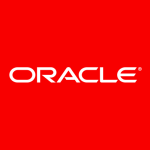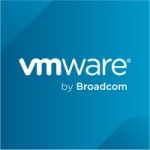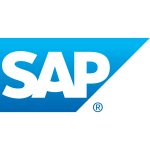What is our primary use case?
These are for some of our applications where we wanted high resiliency. In the traditional VM environment, what used to happen is that everything was dependent on the infrastructure. We wanted to move away from that particular concept. Once an application becomes stateless, it should not be dependent upon platform-related things. We wanted it to be more robust and perform at a much better efficiency. We also wanted higher availability.
We are getting everything from OpenShift at this point in time. What we're doing here is pretty much basic. Any of Kubernetes could have done it because all we're looking for is being able to manage the complete cluster.
What is most valuable?
Its interface is good. The other part is the seamless integration with the stack that I have. Because my stack is mostly of Red Hat, which is running on top of VMware virtualization, I have had no issues with integrating both of these and trying to install them. We had a seamless integration with the other non-Red Hat products as well.
What needs improvement?
One of the features that I've observed in Tanzu Mission Control is that I can manage multiple Kubernetes environments. For instance, one of my lines of business is using OpenShift OKD; another one wants to use Google Anthos, and somebody else wants to use VMware Tanzu. If I have to manage all these, Tanzu Mission Control is giving me the opportunity to completely manage all of my Kubernetes clusters, whereas, with OpenShift, I can only manage a particular area. I can't manage other Kubernetes clusters. I would like to have the option to manage all Kubernetes clusters with OpenShift.
I would like to have self-service capability. A lot of developers want to become independent today, and they don't want to depend on the Infra teams for managing, provisioning, etc. If we can give a self-service capability, in terms of building a particular Kubernetes cluster end-to-end, to developers, that would be a plus. That's the ask of the hour.
For how long have I used the solution?
I have been using this solution for the past one and a half years.
Buyer's Guide
Red Hat OpenShift
October 2025
Learn what your peers think about Red Hat OpenShift. Get advice and tips from experienced pros sharing their opinions. Updated: October 2025.
873,085 professionals have used our research since 2012.
What do I think about the stability of the solution?
It is a perfectly stable product. If an application is ready to be containerized, it is seamless. You will not have any hiccups.
What do I think about the scalability of the solution?
Scaling up and down is happening, but my concern is that if we hit any kind of bugs, the open-source community won't be that active in terms of doing the bug fixes. If I get any bug, there might be a delay in getting the bug release or the patch coming up. When I'm hosting an enterprise data application on an open-source product, I will have a little higher risk of non-availability, and that might lead to revenue impact as well. Keeping that in mind, I would like to go for the enterprise edition, at least for my high revenue-generating applications.
In terms of the number of people working with this solution, I have about eight administrators. I have eight people in my team who manage the complete Kubernetes cluster for me, which is a combination of OKD and Tanzu. It is being used on a daily basis.
How are customer service and support?
We are using the open-source version, and their community support is good. I don't expect a rapid response from the community, but if I post today, I usually get a response in a few hours.
We have an enterprise agreement with Red Hat for the other products that we are using. Their response is very prompt.
Which solution did I use previously and why did I switch?
We also use Tanzu, which has more limitations. If I have to use an F5 load balancer or other third-party products, Tanzu shrinks a little bit. It is not as mature as Red Hat OpenShift, which is more open to other products. I have an F5 load balancer, and I struggle a bit to integrate the F5 load balancer with Tanzu, whereas with OpenShift, it happens directly. For Tanzu, I have to have another layer on my load balancer, which is Avi. I have to use their services. Adding one more product into the environment brings some complexity, whereas OpenShift is very agile in nature. It adapts to all kinds of products that are not part of the same stack. So, I had no issues with that. I would rate OpenShift higher than Tanzu because OpenShift is a much more mature product.
How was the initial setup?
It was straightforward. I had a perfect team with prior experience in OpenShift. They were able to do it without any hiccups. The community of OpenShift is very good. There are a lot of exchanges happening in the community space, which helped us in doing it in a seamless way. I would rate it a 5 out of 5 in terms of the ease of the setup.
What's my experience with pricing, setup cost, and licensing?
We are currently using the open version, OKD. We plan to get the enterprise version in the future.
What other advice do I have?
It is an excellent product. There are a lot of items that will be good to have in there, but based on the comparison with others and based on the kind of use cases I have seen, I would rate it a 10 out of 10.
Disclosure: My company does not have a business relationship with this vendor other than being a customer.





















Interesting review - although I am not sure what is meant by "There is no orchestration platform in OpenShift." As it is an orchestration platform!